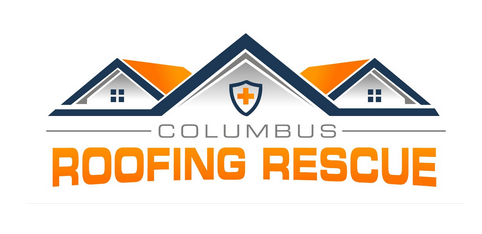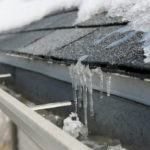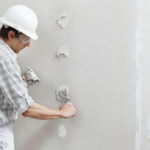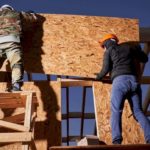
Do I Need Attic Insulation? Here Are The Benefits
As a homeowner, you may be familiar with the importance of properly insulating your home to keep it warm in the winter and cool in the summer. One area that is often overlooked but significantly impacts your home’s energy efficiency, is the attic. Attic roof insulation can significantly affect your home’s energy consumption, comfort, and even air quality. In this article, I will discuss the benefits of attic roof insulation, the different types of insulation available for attic roof rafters, and how to insulate and install insulation in your attic. We will also explore common mistakes to avoid when insulating your attic roof and why you should consider protecting your attic roof in the first place.
Benefits of attic roof insulation
Attic roof insulation offers numerous benefits for homeowners. First and foremost, proper attic roof insulation can result in lower energy bills. By insulating your attic roof, you reduce the amount of heat transfer between your living spaces and the outside environment. This means that your heating and cooling systems won’t have to work as hard to maintain a controlled comfortable temperature, leading to lower energy consumption and lower utility bills.
Another benefit of attic roof insulation is improved comfort throughout your home. By insulating the attic roof, you’re reducing the heat that escapes through the roof during the winter months, which helps maintain a more consistent temperature throughout your home. Similarly, in the summer months, attic roof insulation helps to keep the hot air outside and the cool air inside, resulting in a more comfortable living environment.
Lastly, attic roof insulation can also help improve your home’s air quality. Proper insulation helps reduce air infiltration and exfiltration, which can lead to a buildup of indoor pollutants such as allergens, mold, and mildew. By insulating your attic roof, you can help to create a healthier environment for you and your family.
Different types of insulation for attic roof rafters
When it comes to attic roof insulation, you can choose from several different types of materials. Here are some of the most popular types of insulation for attic roof rafters include:
Fiberglass insulation: This type of insulation is made from fine glass fibers and is also available in both batts and rolls. Fiberglass insulation is an affordable and effective option for insulating attic roof rafters, providing good thermal resistance and soundproofing qualities.

Mineral wool insulation: Made from inorganic materials such as basalt rock and recycled slag, mineral wool insulation is a highly effective insulation material with excellent thermal resistance and soundproofing properties. It’s also fire-resistant and resistant to mold and mildew growth, making it a popular choice for attic roof insulation.
Spray foam insulation: Spray foam insulation is a two-part liquid that expands when mixed, forming a rigid foam that provides excellent thermal resistance and air-sealing properties. It can be an effective option for insulating attic roof rafters, especially in areas with irregular shapes or hard-to-reach spaces.
Cellulose insulation: Made from recycled paper products, cellulose insulation, is an eco-friendly option for insulating attic roof rafters. It provides good thermal resistance and soundproofing properties and is often treated with fire retardants and mold inhibitors.
How to insulate an attic roof rafters
Insulating attic roof rafters can be a DIY project if you’re comfortable working in tight spaces and have the necessary tools and safety equipment. Here’s a step-by-step guide on how to insulate attic roof rafters:
Inspect your attic: Before starting any insulation project, it’s important to inspect your attic for any signs of water damage, mold, or structural issues. Address any problems before moving forward with insulation.
Measure and calculate: Measure the length and width of your attic and the spacing between the rafters. Use these measurements to determine the amount and type of insulation you’ll need.
Seal air leaks: Before installing insulation, it’s important to seal any air leaks in your attic. Use caulk or spray foam to seal gaps around plumbing vents, electrical wiring, and other penetrations through the attic floor.
Install baffles: If you’re using loose-fill or blown-in insulation, install baffles between the rafters to create an air channel that allows for proper ventilation.
Install insulation: Depending on the type of insulation you’re using, the installation process may differ. For batt or roll insulation, simply cut the insulation to the appropriate width and length, and fit it snugly between the rafters. For blown-in or loose-fill insulation, use a machine to blow the insulation into place.
Finish the job: Once the insulation is in place, cover it with a vapor barrier, such as polyethylene sheeting, to prevent moisture from entering the insulation. Secure the vapor barrier with staples or tape, and then cover it with drywall or another type of finishing material.
Best insulation for attic ceiling
When choosing the best insulation for your attic ceiling, it’s important to consider factors such as the R-value, which measures the insulation’s thermal resistance, and the material’s resistance to moisture, mold, and pests. Some of the best insulation options for attic ceilings include:
Spray foam insulation: As mentioned earlier, spray foam insulation offers excellent thermal resistance and air-sealing properties, making it an ideal choice for attic ceilings. However, it can be more expensive than other options and requires professional installation.

Mineral wool insulation: With its high R-value and resistance to fire, mold, and mildew, mineral wool insulation is a great choice for attic ceilings.
Fiberglass insulation: Fiberglass insulation is an affordable and effective option for insulating attic ceilings, providing good thermal resistance and soundproofing qualities.
Ultimately, the best insulation for your attic ceiling will depend on factors such as your budget, local climate, and personal preferences.
Should I insulate my attic floor or ceiling?
Whether you should insulate your attic floor or ceiling depends on how you use your attic space and your overall insulation goals. Insulating the attic floor is typically recommended if:
Your attic is unfinished and used primarily for storage.
You want to create a barrier between the living spaces below and the unconditioned attic space, which can help to reduce energy loss and improve comfort.
On the other hand, insulating the attic ceiling may be the better option if: Your attic is finished and used as a living space.
You want to create a continuous thermal envelope that includes the attic space, which can help to improve energy efficiency and comfort levels throughout your entire home.
In some cases, it will be beneficial to insulate both the attic floor and ceiling, especially if you have a partially finished attic or a combination of finished and unfinished spaces.
How to install insulation in the attic
Installing insulation in your attic can be a DIY project or a task for professional insulation contractors. Here’s a step-by-step guide on how to install insulation in your attic:
Choose the right insulation: As discussed earlier, there are several types of insulation materials available, each with its own unique properties and benefits. Choose the insulation that best suits your needs and budget.
Prepare the attic: Before installing insulation, ensure that your attic is clean, dry, and free of any structural issues, water damage, or mold growth.
Seal air leaks: Use caulk, spray foam, or weatherstripping to seal any gaps or cracks in the attic that may be allowing air to flow in or out.
Measure and cut insulation: Measure the space between your attic floor joists or ceiling rafters, and cut the insulation to the appropriate size. Be sure to wear protective gear, such as gloves and a mask, when handling insulation materials.

Install insulation: For batt or roll insulation, simply lay it between the joists or rafters, ensuring a snug fit. For blown-in or loose-fill insulation, use a machine to blow the insulation material into place.
Cover the insulation: Once the insulation is in place, cover it with a vapor barrier, such as polyethylene sheeting, to prevent moisture from entering the insulation. Secure the vapor barrier with staples or tape, and then cover it with drywall or another type of finishing material.
Finish the job: If you’re installing insulation in a finished attic, be sure to follow local building codes and regulations for ventilation and fire safety.
Common mistakes to avoid when insulating your attic roof
While insulating your attic roof can be a relatively simple project, there are some common mistakes that homeowners should avoid. These mistakes can lead to reduced effectiveness of the insulation, as well as potential safety hazards.
Here are some common mistakes to watch out for:
Blocking ventilation: Attic ventilation is essential for maintaining proper airflow and preventing moisture buildup. Be sure not to block any vents or create airtight spaces when installing insulation.
Insulating too much: While it may seem like more insulation is better, over-insulating your attic roof can lead to moisture buildup and reduced effectiveness. Follow recommended R-values for your climate zone.
Neglecting air sealing: Proper air sealing is critical for preventing air leakage and ensuring the effectiveness of your insulation. Be sure to seal any gaps or cracks in your attic before installing insulation.
Ignoring safety precautions: Insulation materials can be hazardous to your health if not handled properly. Always wear protective gear, such as gloves and a mask, when working with insulation materials.
Attic roof insulation services
If you’re uncomfortable tackling an attic roof insulation project alone, many professional insulation contractors can help. These contractors have the tools, experience, and safety equipment necessary to safely and effectively install attic roof insulation. They can also provide guidance on the best insulation materials for your specific needs and budget.
Conclusion: Why you should consider insulating your attic roof
In conclusion, attic roof insulation is a simple and effective way to improve your home’s energy efficiency, comfort, and air quality. By properly insulating your attic roof, you can reduce your energy bills, maintain a more consistent temperature throughout your home, and create a healthier living environment. With the many different types of insulation materials available, you’re sure to find an option that fits your needs and budget. Whether you choose to tackle the project on your own or hire a professional insulation contractor, insulating your attic roof is a smart investment that can pay off in many ways.



